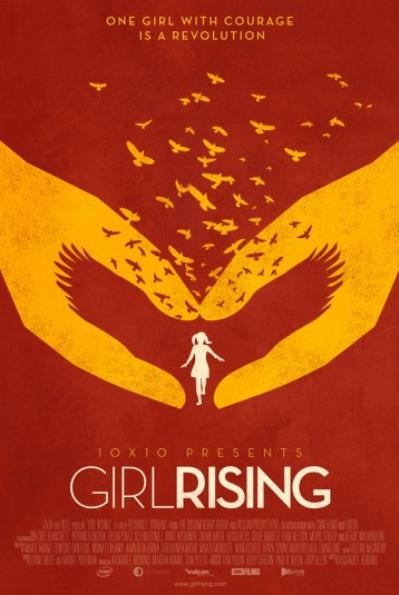October 11 was the International Day of the Girl Child. I have to admit that I wasn’t very aware of it until one of the mailing lists to which I subscribe sent me a reminder, along with details of a screening of Girl Rising in Sydney. Girl Rising is a film about nine different girls, who, against the odds, survive the discrimination and injustice that precludes them from school, commits them to lives of servitude, treats them as second class citizens, discards them as worthless and otherwise denies them an equal place in society. The stories are true, in that each is about the life of a specific individual girl. Writers from the same country have been paired with each girl, to tell their stories. The film is beautifully shot, with each girl’s story having its own visual style. As one would expect, the stories are harrowing. Six year old Suma was forced into bonded labour in Nepal at the age of six, while her brothers went to school. She visits the houses of her three masters where she spent her primary school years, describing her life as a domestic drudge and worse. Amina in Afghanistan was sold to her husband to pay for a second hand car for her brother. She spent her childhood simmering with rage while fetching water “so men could wash their hands.” Sokha is an orphan, surviving on the pickings from a dump in Cambodia until chance brings her to a new life. Despite the horrors, there are moments of hope. Ruksana’s father is committed to providing an education for she and her sisters despite the hardships of life lived on the pavements of Kolkata. Azmera’s brother supports her when she wishes to stay at school rather than marry a stranger at 13. Senna channels the warrior princess after whom her father named her.
The stories of the girls are separated by facts and figures, about the deprivations heaped upon girl children – their exclusion from education, sexual abuse and high rates of pregnancy-related harms. There are also facts and figures about the economic benefits of educating girls such as the dollar value that every year of female education adds to a country’s GDP. The interludes detract from the film, but I had some sympathy with the film-makers’ aims to hit their message home as hard as possible – the film is a fundraiser.
Of course I was aware of discrimination against girls, but this film put names and faces to that vague awareness. It is a jarring reminder that girls are dying daily, being forced into sexual relationships, having their childhoods stolen from them. These are not complex moral issues requiring careful and detailed analysis in bioethics journals: they are just plain wrong.


